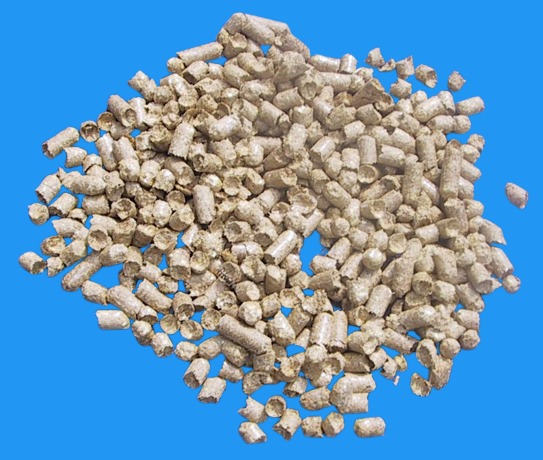In a world increasingly focused on sustainability and efficiency, pelletierung, or pelletization, is gaining widespread traction across diverse industries. This revolutionary method includes compressing raw substances into compact pellets, supplying many benefits, from more suitable storage to improved power output. With its developing significance in biomass energy manufacturing, feedstock management, and waste processing, pelletierung is hastily becoming a key participant in the quest for sustainable answers. In this guide, we will explore everything you want to recognize about pelletization, its programs, and how it’s shaping the industry’s destiny.
Table of Contents
Understanding Pelletierung
Pelletierung is a way that transforms loose materials into dense, cylindrical pellets. This technique includes the application of strain to compress materials like biomass, feedstock, and fertilizers, growing uniform pellets that are easy to handle, shop, and transport. The materials typically used in pelletization include wood, agricultural residues, and various forms of waste, all of which can be converted into precious merchandise through this procedure.
The number one reason for using pelletization is its capability to increase efficiency and simplify the logistics of fabric management. By turning bulky substances into compact pellets, companies can optimize garage space and facilitate transportation, leading to value financial savings and more advantageous operational performance.
Key Benefits of Pelletierung
One of the standout advantages of pelletization is its capability to grow performance. Pellets, being compact, have considerable space in the shop at some point in the garage and transportation, making logistics extra streamlined and value-effective. In biomass power manufacturing, pelletization complements combustion and strength output, supplying a dependable source of renewable electricity.
Another crucial advantage is the fee-effectiveness of pelletization. By reducing fabric wastage and optimizing resource usage, companies can enjoy tremendous fee financial savings. Furthermore, pelletization contributes to sustainability by transforming biomass into eco-friendly power solutions, thereby lowering carbon emissions. Additionally, the consistency in product satisfaction provided through pellets ensures standardized size and density, which is critical for diverse business packages.
Applications of Pelletierung
Pelleting has diverse programs across several sectors. Biomass electricity production entails transforming natural substances, including wood, sawdust, and agricultural residues, into renewable power resources. This not only affords a sustainable electricity solution but also reduces reliance on fossil fuels.
In animal feed production, pelletization improves feed efficiency and nutrient consistency, ensuring animals have a balanced weight loss program. Similarly, in the fertilizer quarter, pelletization creates uniform pellet fertilizers, facilitating easier distribution and alertness. Furthermore, in waste control, pelletization offers a sensible solution for changing business and agricultural waste into beneficial products and minimizing environmental impact.
Pelletierung Technologies and Equipment
Pelletization entails various technologies and gadgets, each ideal for particular materials and production desires. Common technologies encompass flat die pellet mills and ring die pellet generators, both of which efficiently manner materials into pellets. When choosing pelletizing equipment, elements such as material type, manufacturing volume, and preferred pellet quality have to be considered.
The enterprise continues to witness improvements in pelletization generation. Automation and power-saving equipment are a number of cutting-edge trends that enhance the performance and sustainability of the pelletization system. These innovations enable agencies to attain better productivity ranges even by lowering energy intake and supporting efforts towards a greener destiny.
Challenges in the Pelletierung Process
Despite its blessings, pelletization presents numerous challenges. Moisture management and material consistency are common troubles that can impact the quality of pellets. To overcome these challenges, organizations should focus on higher pre-treatment of materials, including drying and conditioning, to ensure the most excellent pelletization effects.
Real-world case research spotlights successful strategies for addressing pelletization difficulties. By enforcing optimized drying strategies and investing in superior moisture control structures, corporations have managed to achieve regular pellet exceptionality and improve typical system performance. These examples show the importance of proactive measures in mitigating demanding situations and reaching favored effects.
Pelletierung and Sustainability
Pelleting performs a pivotal role in promoting sustainability and supporting a circular economy. Changing biomass into power contributes to decreasing carbon emissions and minimizing the environmental footprint of electricity manufacturing. Additionally, pelletization helps divert agricultural waste from landfills, imparting a green answer for waste management.
The environmental benefits of pelletization amplify beyond power production. By imparting a sustainable opportunity to traditional energy assets, pelletierung supports efforts to combat climate exchange and maintain natural assets. Its contribution to a cleaner and greener destiny underscores its significance in reaching global sustainability goals.
Future Trends in Pelletierung
The destiny of pelletization is promising, with emerging technology and tendencies shaping its trajectory. Increased automation and the integration of AI tracking structures are anticipated to enhance precision and performance in pellet production. These improvements will allow groups to optimize their operations and improve product quality, meeting the evolving needs of the enterprise.
Pelleting is poised to develop a position in green energy and waste recycling. As the arena continues to prioritize sustainability, the demand for renewable energy sources and efficient waste control solutions will boom. Pelletization is nicely placed to cope with these needs, contributing to the transition closer to a more sustainable and eco-conscious future.
Conclusion
In precis, pelletierung is revolutionizing industries consisting of power, agriculture, and waste control. Its key benefits and accelerated efficiency, cost-effectiveness, and sustainability make it an appealing answer for businesses searching to optimize their operations. Corporations can release more performance and align with global sustainability dreams by exploring pelletization technologies. Whether in strength manufacturing, agriculture, or waste control, thinking about pelletization as a part of your strategy can bring full advantages and contribute to a greater sustainable destiny.


